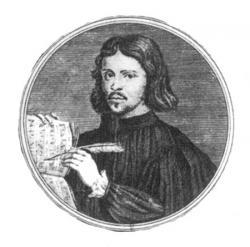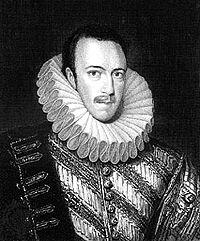Planning worship?
Check out our sister site, ZeteoSearch.org,
for 20+ additional resources related to your search.
- |
User Links
Search Results
What creature, O sweet Lord
Author: Philip Howard, Earl of Arundel Meter: 6.6.8.6 D Appears in 2 hymnals
What creature, O sweet Lord
THE FIFTH TUNE
Meter: 6.6.8.6 D Appears in 4 hymnals Composer and/or Arranger: Thomas Tallis (c. 1515-1585) Tune Key: E Major Incipit: 13455 64543 23134 Used With Text: What creature, O sweet Lord
THE FIFTH TUNE
What creature, O sweet Lord
Author: Philip Howard, Earl of Arundel Hymnal: The Cambridge Hymnal #133 (1967) Tune Title: OLD 25TH
What creature, O sweet Lord
What creature, O sweet Lord
Author: Philip Howard, Earl of Arundel (1557-1595) Hymnal: The Summit Choirbook #426 (1983) Meter: 6.6.8.6 D Topics: Praise, Trust, Petition Languages: English Tune Title: THE FIFTH TUNE
What creature, O sweet Lord
Thomas Tallis

1505 - 1585 Person Name: Thomas Tallis (c. 1515-1585) Composer of "THE FIFTH TUNE" in The Summit Choirbook Thomas Tallis (b. Leicestershire [?], England, c. 1505; d. Greenwich, Kent, England 1585) was one of the few Tudor musicians who served during the reigns of Henry VIII: Edward VI, Mary, and Elizabeth I and managed to remain in the good favor of both Catholic and Protestant monarchs. He was court organist and composer from 1543 until his death, composing music for Roman Catholic masses and Anglican liturgies (depending on the monarch). With William Byrd, Tallis also enjoyed a long-term monopoly on music printing. Prior to his court connections Tallis had served at Waltham Abbey and Canterbury Cathedral. He composed mostly church music, including Latin motets, English anthems, settings of the liturgy, magnificats, and two sets of lamentations. His most extensive contrapuntal work was the choral composition, "Spem in alium," a work in forty parts for eight five-voice choirs. He also provided nine modal psalm tunes for Matthew Parker's Psalter (c. 1561).
Bert Polman
Thomas Tallis
Philip Howard

1557 - 1595 Person Name: Philip Howard, Earl of Arundel Author of "What creature, O sweet Lord" in The Cambridge Hymnal Howard, Philip, Earl of Arundel, son of Thomas fourth Duke of Norfolk, was b. June 28, 1557, at Arundel House, London. He fell under suspicion of dealings with Mary Queen of Scots, was committed to the Tower of London in 1585, and died there Oct. 19, 1595. During his imprisonment he wrote some verses found in his translation of An Epistle in the person of Christ to the faithful Soul, by Johann Justus, a native of Landsberg, in Bavaria, generally known as Lauspergius or Landsberger (d. 1539). The verses are not translations from Lanspergius. They are in the 1st ed. of the An Epistle, 1595 [Lambeth Library, 32, 9, 5], but not in the ed. of 1610 [Brit. Mus., G. 20019], or the reprint of 1876. From these verses C. T. Gatty made two centos for the Arundel Hymns, 1902, viz.:—
1. No eye hath seen what joys the saints obtain. Heaven.
2. O Christ the glorious Crown. Praise. Lingard, J. See p, 1697, ii.
--John Julian, Dictionary of Hymnology, New Supplement (1907)
Philip Howard


 My Starred Hymns
My Starred Hymns

